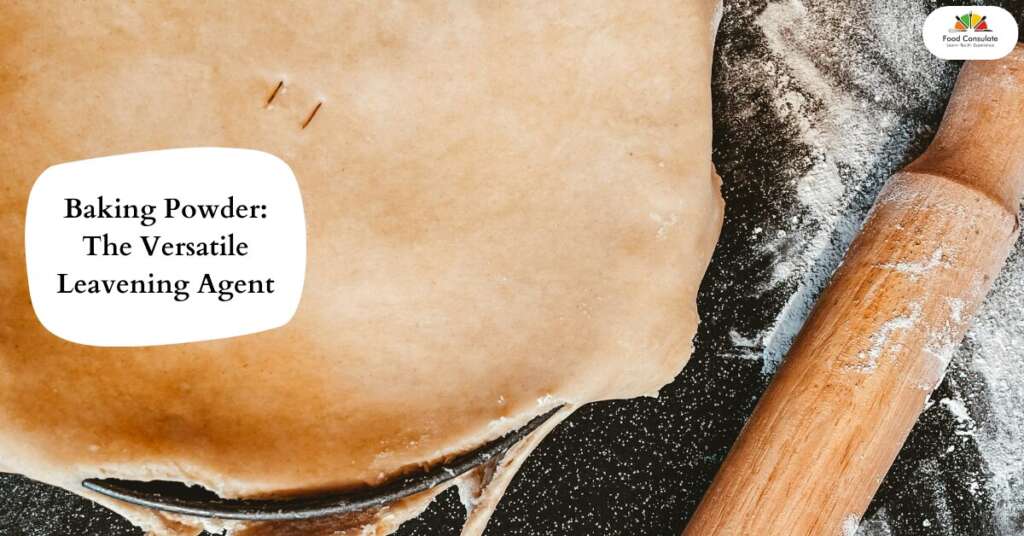Welcome to Food Consulate, Chennai’s premier baking institute located in the vibrant neighborhood of Velachery.
At Food Consulate, we believe that understanding the science behind baking is essential for every aspiring baker. One of the fundamental aspects of baking is choosing the right leavening agent, whether it be baking soda or baking powder.
While they might seem similar, they have distinct properties and are not interchangeable in recipes. Understanding the differences between the two can help you become a more confident and successful baker
Baking Soda: The Alkaline Leavening Agent

Baking soda, also known as sodium bicarbonate, is a chemical compound that reacts with acids to produce carbon dioxide gas. This gas is what causes baked goods to rise.
Our expert instructors emphasize the significance of choosing the right leavening agent for each recipe to ensure optimal results.
Key Points about Baking Soda:
Acid Reactivity: Baking soda requires an acid to activate its leavening properties. Common acids used in baking include buttermilk, yogurt, lemon juice, vinegar, or brown sugar.
Immediate Action: Once mixed with an acid, baking soda begins to react immediately, so it’s essential to get your batter or dough into the oven promptly after combining the ingredients.
Neutralizing Acidity: Baking soda can also be used to neutralize acidity in recipes, such as in those calling for excess acidity from ingredients like tomatoes.
Baking Powder: The Versatile Leavening Agent

Baking powder is a mixture of baking soda, a powdered acid (such as cream of tartar), and a moisture-absorbing agent (such as cornstarch).
Unlike baking soda, baking powder contains both an acid and a base, allowing it to react with liquid and produce carbon dioxide gas without the need for additional acid.
Key Points about Baking Powder:
Double Acting: Baking powder is typically labeled as either single-acting or double-acting. Single-acting baking powder reacts with moisture and produces gas immediately upon mixing.
Double-acting baking powder reacts twice: once when it comes into contact with liquid and again when exposed to heat in the oven.
Versatility: Baking powder is more versatile than baking soda since it contains its own acid. It can be used in recipes that don’t contain acidic ingredients.
Storage: Baking powder has a longer shelf life than baking soda because it is less reactive. However, it can still lose its potency over time, so it’s essential to check the expiration date and store it in a cool, dry place.
When to Use Each Leavening Agent
Knowing when to use baking soda versus baking powder is crucial for successful baking.
Our instructors provide students with the knowledge and skills to make informed decisions about which leavening agent to use based on the specific requirements of their recipes.
Use Baking Soda: In recipes that contain acidic ingredients like buttermilk, yogurt, or lemon juice. Baking soda is also ideal for recipes that call for a neutralizing agent for acidity.
Use Baking Powder: In recipes that don’t contain acidic ingredients or when you want a more controlled rise, such as in cakes, muffins, and pancakes.
Conclusion
While baking soda and baking powder serve similar purposes in baking, they are not interchangeable. Understanding their differences and when to use each will help you achieve the best results in your baked goods.
Ready to embark on your baking journey? Enroll in our courses at Food Consulate today and discover the joy of creating delicious treats with confidence!
Happy Baking!








Comments are closed.